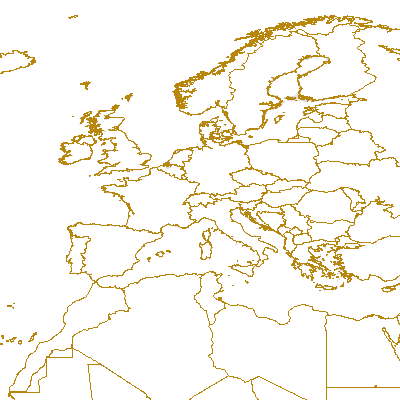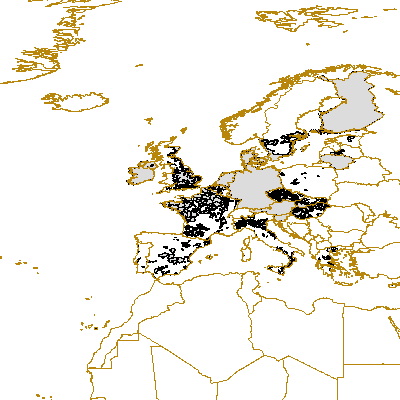2006
Type of resources
Topics
INSPIRE themes
Keywords
Contact for the resource
Provided by
Years
Formats
Representation types
Update frequencies
status
Scale
Resolution
-

Complete Coastline Features for all the countries that produced Corine Land Cover 2000 and have a coastline, with detailed descriptions on the environment and type of coastal areas. Each coast segment has inherited CLC 2000 class, and also the attributes from Eurosion Coastline version 2.1 2004, regarding geomorphology, type of coast and erosion trends.
-

Data on designated nitrate vulnerable zones as submitted by Member States for monitoring progress of implementation of the Nitrate Directive (Council Directive 91/676/EEC of 12 December 1991 concerning the protection of waters against pollution caused by nitrates from agricultural sources). This Directive has the objective of reducing water pollution caused or induced by nitrates from agricultural sources and preventing further such pollution. Waters affected by pollution and waters which could be affected by pollution if action pursuant Article 5 is not taken shall be identified by the Member States in accordance with the criteria set out in Annex I.
-
European soil database (ESDB), Dominant STU rasters (Soil Topologycal Units) - version 2.0, May 2006

The European Soil Database (ESDB) contains four discrete datasets: - the Soil Geographical Database of Eurasia at scale 1:1,000,000 (SGDBE) - the Pedotransfer Rules Database (PTRDB) - the Soil Profile Analytical Database of Europa (SPADBE) - the Database of Hydraulic Properties of European Soils (HYPRES) This 1km x 1km raster version release of the database is freely available to the public and contains a 1km raster version of the vector based soil geometry (which is part of the SGDBE). Raster values have been derived using the "features to raster" tool in the Spatial Analyst extension of ArcGIS, the feature layer being a shapefile created from the SGDBE geometrical database to which attributes from SGDBE and PTRDB have been linked according to the "dominant STU" principle for the "dominant STU" rasters. Dominant STU principle: For each SMU (Soil Mapping Unit): a “dominant STU” is associated. (“dominant” in terms of % of area). The value of a soil attribute A (e.g. depth-to-rock) for this SMU would be the value that A has within that dominant STU. The attributes are described at: http://eusoils.jrc.ec.europa.eu/ESDB_Archive/raster_archive/SG_attr.htm http://eusoils.jrc.ec.europa.eu/ESDB_Archive/raster_archive/pt_attr.htm This metadata record is adapted from the orginal one received from JRC.
-

The European Soil Database (ESDB) contains four discrete datasets: - the Soil Geographical Database of Eurasia at scale 1:1,000,000 (SGDBE) - the Pedotransfer Rules Database (PTRDB) - the Soil Profile Analytical Database of Europa (SPADBE) - the Database of Hydraulic Properties of European Soils (HYPRES) This 1km x 1km raster version release of the database is freely available to the public and contains a 1km raster version of the vector based soil geometry (which is part of the SGDBE). Raster values have been derived using the "features to raster" tool in the Spatial Analyst extension of ArcGIS, the feature layer being a shapefile created from the SGDBE geometrical database to which attributes from SGDBE and PTRDB have been linked according to the "dominant value" principle for the "dominant value" rasters. Dominant Value principle: For each SMU (Soil Mapping Unit) and for a soil attribute P: the value of P is the class value that appears most within the SMU, i.e. each SMU is fully coloured with the colour assigned to the attribute class which is dominant within each SMU. The attributes are described at: http://eusoils.jrc.ec.europa.eu/ESDB_Archive/raster_archive/SG_attr.htm http://eusoils.jrc.ec.europa.eu/ESDB_Archive/raster_archive/pt_attr.htm This metadata record is adapted from the orginal one received from JRC.
-

The current dataset is a combination of SRTM 90 and DTED data. The Shuttle Radar Topography Mission (SRTM) obtained elevation data on a near-global scale to generate the most complete high-resolution digital topographic database of Earth. SRTM consisted of a specially modified radar system that flew onboard the Space Shuttle Endeavour during an 11-day mission in February of 2000. SRTM is an international project spearheaded by the National Geospatial-Intelligence Agency (NGA) and the National Aeronautics and Space Administration (NASA). Version 2 of the Shuttle Radar Topography Mission digital topographic data (also known as the "finished" version). was used for generation of this dataset. Version 2 is the result of a substantial editing effort by the National Geospatial Intelligence Agency and exhibits well-defined water bodies and coastlines and the absence of spikes and wells (single pixel errors), although some areas of missing data ('voids') are still present. The Version 2 directory also contains the vector coastline mask derived by NGA during the editing, called the SRTM Water Body Data (SWBD), in ESRI Shapefile format. DTED (or Digital Terrain Elevation Data) was originally developed in the 1970s to support aircraft radar simulation and prediction. DTED supports many applications, including line-of-sight analyses, terrain profiling, 3-D terrain visualization, mission planning/rehearsal, and modeling and simulation. DTED is a standard NGA product that provides medium resolution, quantitative data in a digital format for military system applications that require terrain elevation. The DTED format for level 0, 1 and 2 is described in U.S. Military Specification Digital Terrain Elevation Data (DTED) MIL-PRF-89020B, and amongst others describe the resolution: Level 0 used for geneation of this dataset has a post spacing of 30 arcseconds in latitude direction (ca. 900 meters)
-

EuroRegionalMap v9.0 is a pan-European dataset containing topographic information at the scale 1:250 000 covering: 27 EU member states (excluding Croatia), 4 EFTA states (Liechtenstein, Norway, Iceland, Switzerland), Republic of Moldova, Serbia, Kosovo and Georgia. It is a seamless and harmonised data and is produced in cooperation by the National Mapping and Cadastral Agencies of Europe, using official national databases. Thematic layers: Administrative Boundaries, Hydrography, Settlements, Transport, Points of Interests, Named Location, Miscellaneous, Vegetation and Soil.
 RUC Geo-Data catalogue
RUC Geo-Data catalogue